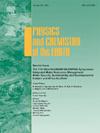Intercomparison of machine learning models for estimating leaf area index of rice using UAV-based multispectral imagery
IF 3
3区 地球科学
Q2 GEOSCIENCES, MULTIDISCIPLINARY
引用次数: 0
Abstract
Leaf Area Index (LAI) serves as a crucial biophysical indicator, providing valuable insights into canopy vigor and water use. Accurate LAI estimation is essential for crop monitoring, and crop yield prediction. The present study assessed the efficacy of different machine learning (ML) algorithms in estimating LAI obtained from field experiment conducted in Roorkee, India, where rice was grown under two irrigation techniques, and three nitrogen levels. LAI was measured using a ceptometer and images were captured from an Unmanned Aerial Vehicle (UAV)-borne multispectral sensor. Nine ML models were built using 20 vegetation indices, which included Multiple Linear Regression (MLR), Ridge Regression, Lasso Regression, Elastic Net Regression, Extreme Gradient Boosting Regression (XGBoosting), Support Vector Machine (SVM), K-Nearest Neighbors (KNN), Artificial Neural Network (ANN) and Random Forest (RF). Among the vegetation indices used in the study, ENDVI and EG showed the highest positive correlation (r = 0.68) with LAI values. Other vegetation indices such as NDVI, ARVI, OSAVI, and NDI also had a positive correlation (r ≥ 0.60) with LAI values. During model testing, lower R2 values were recorded for MLR (0.74), Ridge (0.75), Lasso (0.78), ElasticNet (0.74), and XGBoosting (0.77) models, while KNN (0.82), SVM (0.84), ANN (0.83), and RF (0.80) models performed better. Overall, the SVM outperformed other ML algorithms in predicting the LAI of rice under different treatments. Our study demonstrated that UAV-based multispectral images coupled with ML algorithms are capable of producing LAI of rice with reasonable accuracy.

基于无人机多光谱影像估算水稻叶面积指数的机器学习模型比较
叶面积指数(Leaf Area Index, LAI)是一个重要的生物物理指标,为研究冠层活力和水分利用提供了有价值的信息。准确的LAI估算对于作物监测和作物产量预测至关重要。本研究评估了不同机器学习(ML)算法在估计印度Roorkee田间试验中获得的LAI的有效性,该试验在两种灌溉技术和三种氮水平下种植水稻。LAI是用亮度计测量的,图像是由无人机(UAV)机载多光谱传感器捕获的。采用多元线性回归(MLR)、Ridge回归(Ridge Regression)、Lasso回归(Lasso Regression)、弹性网回归(Elastic Net Regression)、极限梯度增强回归(XGBoosting)、支持向量机(SVM)、k近邻(KNN)、人工神经网络(ANN)和随机森林(Random Forest)等20种植被指数构建了9个ML模型。在本研究使用的植被指数中,ENDVI和EG与LAI的正相关程度最高(r = 0.68)。其他植被指数如NDVI、ARVI、OSAVI和NDI也与LAI值呈正相关(r≥0.60)。在模型测试中,MLR(0.74)、Ridge(0.75)、Lasso(0.78)、ElasticNet(0.74)和XGBoosting(0.77)模型的R2值较低,而KNN(0.82)、SVM(0.84)、ANN(0.83)和RF(0.80)模型的R2值较好。总体而言,SVM在预测不同处理下水稻LAI方面优于其他ML算法。我们的研究表明,基于无人机的多光谱图像与ML算法相结合,能够以合理的精度产生水稻的LAI。
本文章由计算机程序翻译,如有差异,请以英文原文为准。
求助全文
约1分钟内获得全文
求助全文
来源期刊

Physics and Chemistry of the Earth
地学-地球科学综合
CiteScore
5.40
自引率
2.70%
发文量
176
审稿时长
31.6 weeks
期刊介绍:
Physics and Chemistry of the Earth is an international interdisciplinary journal for the rapid publication of collections of refereed communications in separate thematic issues, either stemming from scientific meetings, or, especially compiled for the occasion. There is no restriction on the length of articles published in the journal. Physics and Chemistry of the Earth incorporates the separate Parts A, B and C which existed until the end of 2001.
Please note: the Editors are unable to consider submissions that are not invited or linked to a thematic issue. Please do not submit unsolicited papers.
The journal covers the following subject areas:
-Solid Earth and Geodesy:
(geology, geochemistry, tectonophysics, seismology, volcanology, palaeomagnetism and rock magnetism, electromagnetism and potential fields, marine and environmental geosciences as well as geodesy).
-Hydrology, Oceans and Atmosphere:
(hydrology and water resources research, engineering and management, oceanography and oceanic chemistry, shelf, sea, lake and river sciences, meteorology and atmospheric sciences incl. chemistry as well as climatology and glaciology).
-Solar-Terrestrial and Planetary Science:
(solar, heliospheric and solar-planetary sciences, geology, geophysics and atmospheric sciences of planets, satellites and small bodies as well as cosmochemistry and exobiology).
 求助内容:
求助内容: 应助结果提醒方式:
应助结果提醒方式:


